Having thought a bit about this circuit, I don't think it is a proper overtone oscillator but, because the OP says "it works" there has to be a reason. Now, it's no use trying to simulate this (unless someone has a model of a crystal that can produce overtone operation) so it's partly guesswork...
...Anyway, the upshot of my contemplation is that you may think that it produces a clean overtone frequency at 100 MHz but, it's more than likely, that the distorted waveform it generates will feed harmonics directly on to the antenna.
This is not the same as an overtone oscillator BTW.
So, there will likely be an infinite diminishing series of "odd" harmonics based at the 20 MHz fundamental that could be picked up at an FM broadcast frequency of 100 MHz (the fifth harmonic). And, there's a pretty good chance that if you could find a receiver that could tune to 60 MHz (the third harmonic), you would also pick-up a signal. You might also receive "even" harmonics (typically 80 MHz) at a lower level.
As an experiment, try putting an oscilloscope on the antenna or the collector (via a 1 kohm resistor) and, look at the waveform. I'll bet it's a distorted 20 MHz square-ish wave. This means that the fifth harmonic (100 MHz) will be quite significant and, will "blank" that region on an FM broadcast receiver.
I integrated a sound source to circuit and I could listen to it in
radio.
This has happened so, why is the big question. Well, the oscillator is basically a badly designed Colpitts oscillator that uses the antenna's capacitance as part of the phase shift network. But the OP also said this: -
I integrated a sound source to circuit and I could listen to it in
radio
It's quite feasible that the BJT's miller capacitance is pulled up and down in value by the audio modulation signal and, this will give rise to a small amount of frequency modulation i.e. the crystal can be pulled and pushed off-centre a little. This is well-known to anyone looking into Colpitts oscillators.
I hoped to get an 88 MHz, which is an 11th harmonic frequency of 8
MHz. This time I had no luck.
The 20 MHz crystal oscillated but, the 8 MHz crystal probably didn't oscillate until you "was scratching the pins of my microphone" and, that may have introduced just enough capacitance to cause it to sporadically oscillate and get something at 88 MHz (11th harmonic).
And, as I said above, if you get an oscilloscope you can check this out. You might also add 20 pF from the antenna connection to ground to see if it kick-starts it into oscillation at 8 MHz.
